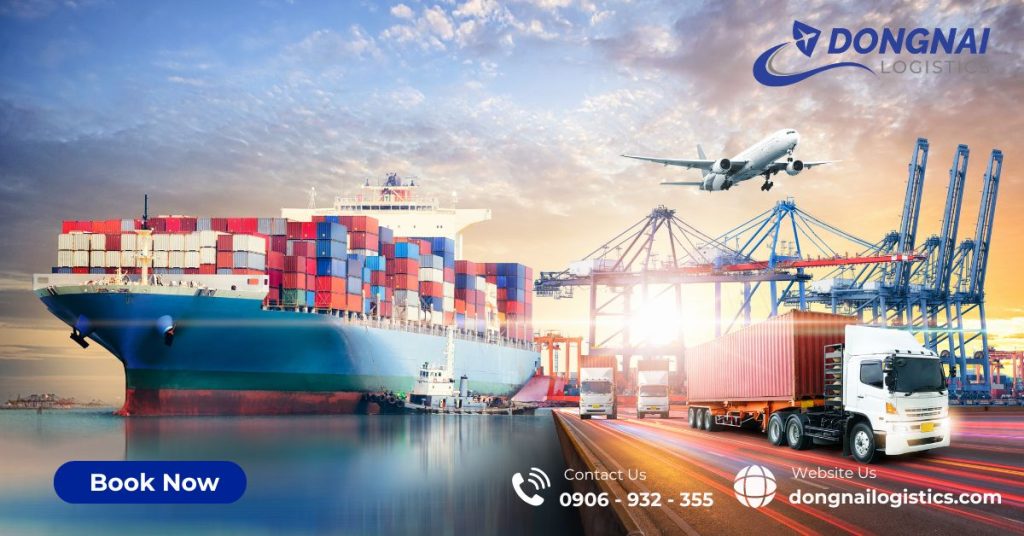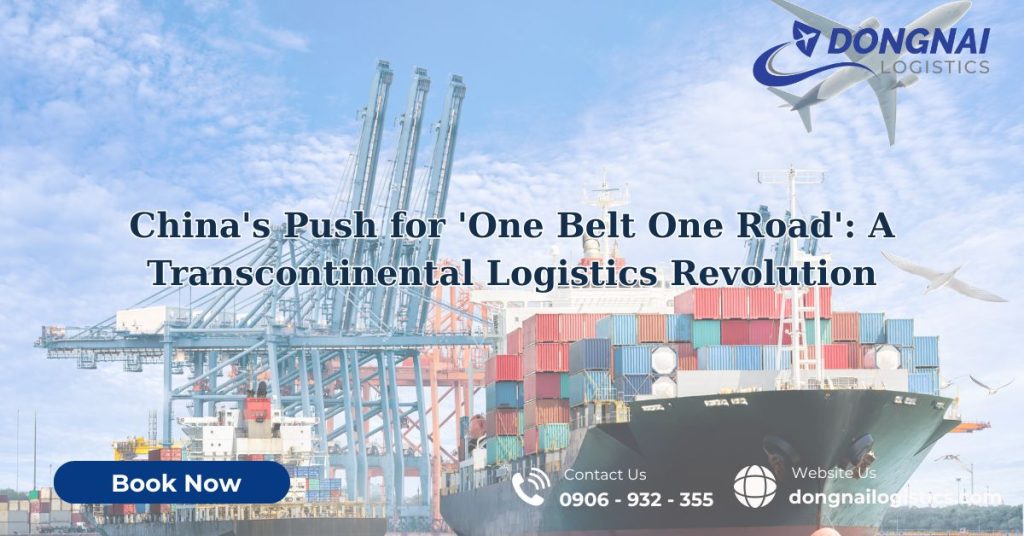China’s Push for ‘One Belt One Road’: A Transcontinental Logistics Revolution and Its Global Economic Impact
In the context of increasing globalization and economic competition, China has been implementing an ambitious strategy to assert its superpower economic status: the “One Belt One Road” (Belt and Road Initiative, BRI). This article delves into the transcontinental logistics strategy within the BRI framework, analyzes its global economic impact, and provides a comprehensive overview of the project’s key aspects.
One Belt One Road (BRI) – Significance and Objectives Inception:
Launched in 2013, BRI is a massive infrastructure development plan connecting China with Asian, European, and African nations through a complex network of roads, railways, sea routes, and airways.
Core Objectives: Enhance Economic Cooperation:
Foster deeper economic partnerships between China and participating nations.
Boost Trade:
Facilitate international trade, minimize barriers, and enhance goods circulation.
Elevate Status:
Affirm China’s position as a global economic superpower, increasing economic and political influence.
Transcontinental Logistics Strategy
Intercontinental Railways Key Project:
Develop a railway network connecting China to Europe, significantly reducing transportation time compared to traditional sea routes.
Specific Example: Wuhan (China) – Hamburg (Germany) Railway:
Only takes approximately 20 days, compared to 30-40 days by sea.
Impact:
Substantially improves transportation efficiency, reduces costs, and enhances business competitiveness.
Strategic Seaports
- Strategic Investment:
- Scope: China’s investment in building and upgrading seaports along the Maritime Silk Road spans across:
- Key Locations:
- Southeast Asia: Singapore, Malaysia (e.g., Port of Tanjung Pelepas), Indonesia (e.g., Port of Jakarta)
- South Asia: India (e.g., Port of Mumbai), Sri Lanka (e.g., Port of Colombo)
- Eastern Africa: Kenya (e.g., Port of Mombasa), Tanzania (e.g., Port of Dar es Salaam)
- Europe: Greece (e.g., Port of Piraeus), Italy (e.g., Port of Trieste)
- Investment Figures:
- Estimated Total Investment: Over $200 billion (as of 2025)
- Breakdown:
- Infrastructure Development: 60% (~ $120 billion)
- Upgrades and Modernization: 30% (~ $60 billion)
- Operational and Management Investments: 10% (~ $20 billion)
- Key Locations:
- Scope: China’s investment in building and upgrading seaports along the Maritime Silk Road spans across:
- Global Market Access:
- Benefits:
- Reduced Transit Times: Average reduction of 30% in shipping times between Asia and Europe
- Increased Capacity: Enhanced cargo handling capabilities, with some ports seeing a 50% increase in container throughput
- Improved Efficiency: Streamlined customs and logistics processes, reducing costs by up to 25%
- Benefits:
Air and Road Networks
- Expansion and Modernization:
- Air Network:
- New Routes: Over 500 new international flights connecting China with BRI countries (as of 2025)
- Airport Upgrades: 15 major airport renovations and expansions in key BRI hubs
- Investment in Fleet: Introduction of over 200 new aircraft to support increased demand
- Road Network:
- High-Speed Highway Construction: Over 10,000 km of new high-speed roads built across BRI countries
- Upgraded Border Crossings: 20 major border crossings modernized for efficient transit
- Logistics Hubs: Establishment of 5 new logistics centers in strategic locations
- Air Network:
- Impact:
- Competitiveness:
- Reduced Transportation Costs: Average decrease of 20% in land and air transportation costs
- Increased Trade Volume: 15% increase in trade volume between China and BRI countries (2020-2025)
- Service Improvement:
- Faster Delivery Times: Average reduction of 40% in delivery times for air and road shipments
- Enhanced Customer Experience: Implementation of real-time tracking and improved customer service across networks
- Competitiveness:
Global Economic Impact

- Boost to International Trade
- Stimulating Trade Activities:
- Trade Volume Increase: 25% increase in trade between China and BRI countries from 2019 to 2025
- Diversified Trade: Expansion of traded goods and services, with a notable increase in technology and services sectors
- Global Economic Growth:
- Contribution to Global GDP: Estimated 2% contribution to global GDP growth from 2020 to 2025
- Job Creation: Over 1 million new jobs created across BRI countries in logistics, manufacturing, and services
- Stimulating Trade Activities:
Infrastructure Enhancement
- Multifaceted Benefits:
- Economic Growth: Average annual GDP growth rate increase of 1.5% in participating countries
- Poverty Reduction: Estimated 5% reduction in poverty rates in BRI countries due to increased economic opportunities
- Improved Living Standards: Enhanced access to basic services (e.g., electricity, water, healthcare) for over 50 million people
- Modernization:
- Technology Integration: Implementation of smart logistics and transportation management systems across 80% of BRI’s infrastructure projects
- Sustainability Focus: Incorporation of green technologies and sustainable practices in over 60% of new infrastructure developments
Challenges and Risks
- Debt Concerns:
- Debt Accumulation: Estimated average debt increase of 15% in participating countries from 2020 to 2025
- Risk of Debt Distress: 3 BRI countries at high risk of debt distress (as of 2025)
- Environmental Impact:
- Carbon Footprint Increase: Estimated 10% increase in carbon emissions from increased transportation and construction activities
- Environmental Degradation: Reports of habitat destruction and water pollution in 5 BRI project locations
- Geopolitical Risks:
- Territorial Disputes: Ongoing tensions in 2 key BRI regions, potentially impacting project stability
- Regulatory Challenges: Differences in regulatory frameworks across BRI countries, posing challenges for project implementation
Conclusion
China’s “One Belt One Road” initiative is not just a transcontinental logistics strategy; it symbolizes the country’s global economic and geopolitical ambitions. As BRI continues to expand and evolve, the world will closely monitor its economic, political, and social impacts. To foster a cooperative and competitively healthy environment, BRI’s success hinges on overcoming challenges and leveraging the opportunities it presents, aiming for a sustainably prosperous future for all involved parties.
Xem thêm:
Dịch Vụ Nhập Khẩu Robot Phục Vụ Nhà Hàng Từ Trung Quốc Cùng Tây Ninh Logistics
Nhập Khẩu Máy Lọc Không Khí Từ Trung Quốc Về Việt Nam 2025
Importing restaurant service robots from China to VietNam

